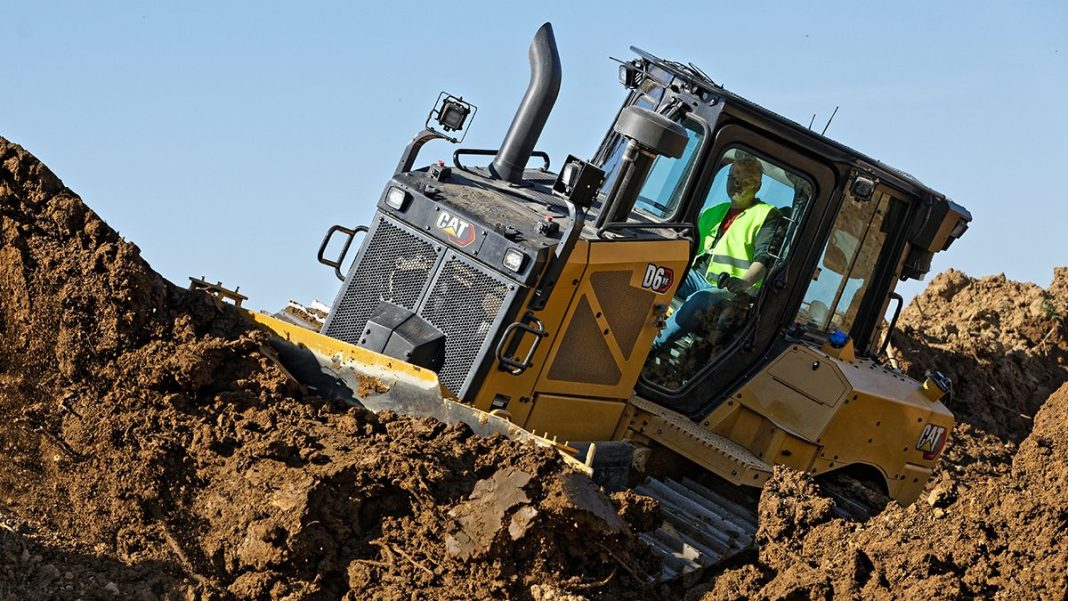Caterpillar Inc., a bellwether of American industrial strength, faced a harsh jolt this week as its stock plunged more than 5.5% in response to China’s announcement of a new 34% tariff on U.S. heavy machinery.
But this isn’t just about one company—it’s a wake-up call for the entire manufacturing sector.
Beyond the immediate market reaction, industry analysts warn of deeper structural challenges that may reshape the landscape of global equipment manufacturing.
A Swift Market Reaction, Rooted in Policy
When China unveiled its retaliatory tariffs in early April, targeting a range of U.S. exports including construction and mining equipment, the implications were immediate. Investors fled Caterpillar stock, fearing lost market share, margin pressure, and long-term demand erosion.
“Retaliatory tariffs like these risk not only reducing overseas sales but also squeezing profit margins and disrupting years of market expansion,” said Kip Eideberg, Senior Vice President of Government and Industry Relations at the Association of Equipment Manufacturers (AEM).
“It’s a lose-lose for both manufacturers and customers globally.”
The tariff, a direct response to ongoing U.S.-China trade tensions, effectively raises the cost of U.S.-made heavy machinery in one of its most crucial markets. China is not only a top buyer but also a strategic gateway to other Asian economies.
Supply Chain Stress and Strategic Realignment
For companies like Caterpillar, which generates more than half of its revenue from international markets, the new tariffs present both operational and strategic risks.
According to analysts at Jefferies, the tariffs could suppress global demand for metals and raw materials, further weakening Caterpillar’s key customer segments, especially mining.
“We’re already seeing early signals that U.S. buyers may step out of the market amid pricing uncertainty. While this might create buying opportunities for contrarian investors, the fundamentals for global equipment demand remain under pressure,” Jefferies stated in a client note.
Winners and Losers in a Reshaped Market
While Caterpillar reels, competitors with local production capabilities and tariff-free market access are poised to benefit:
-
Chinese Manufacturers like Sany and XCMG are likely to capitalize on reduced competition in their home market, potentially increasing exports to Africa, Southeast Asia, and Latin America.
-
Japanese rivals such as Komatsu may gain additional market share due to their diversified manufacturing base and more neutral geopolitical positioning.
-
European firms like Volvo Construction Equipment can also benefit, offering alternatives that are less affected by U.S.-China tensions.
What Can U.S. Manufacturers Do?
Industry experts say the time has come for U.S. companies to rethink traditional production models and supply chains.
“Affected manufacturers should seriously consider increasing regional production to hedge against geopolitical volatility,” Eideberg noted. “Establishing or expanding facilities in Southeast Asia or Latin America could mitigate exposure to future trade barriers.”
Analysts further suggest the adoption of dual supply chains—creating parallel systems in different regions—as a hedge against regional instability.
And then there’s technology: smart manufacturing, AI-powered logistics, and digital twins are increasingly being seen not just as efficiency tools but as survival mechanisms in a volatile trade environment.
Investor Implications: Opportunity or Red Flag?
The drop in Caterpillar’s stock could represent a buying opportunity for long-term investors—if they believe the company can weather the storm and adapt.
“Valuations are starting to look attractive,” Jefferies noted. “But the macro risk premium has undeniably increased. Investors need to balance price opportunity with policy unpredictability.”
Conclusion: The End of Trade Predictability
Caterpillar’s setback is emblematic of a larger shift in global trade dynamics. As tariffs become instruments of geopolitical strategy, the era of frictionless manufacturing and cross-border commerce may be drawing to a close.
For manufacturers, resilience now means much more than operational efficiency—it requires political foresight, adaptive strategy, and investment in regional agility.
Also Read
Granite Construction Insider Stock Sales: What They Mean for Investors
How CitroTech’s Eco-Friendly Fire Defense System is Changing the Game

